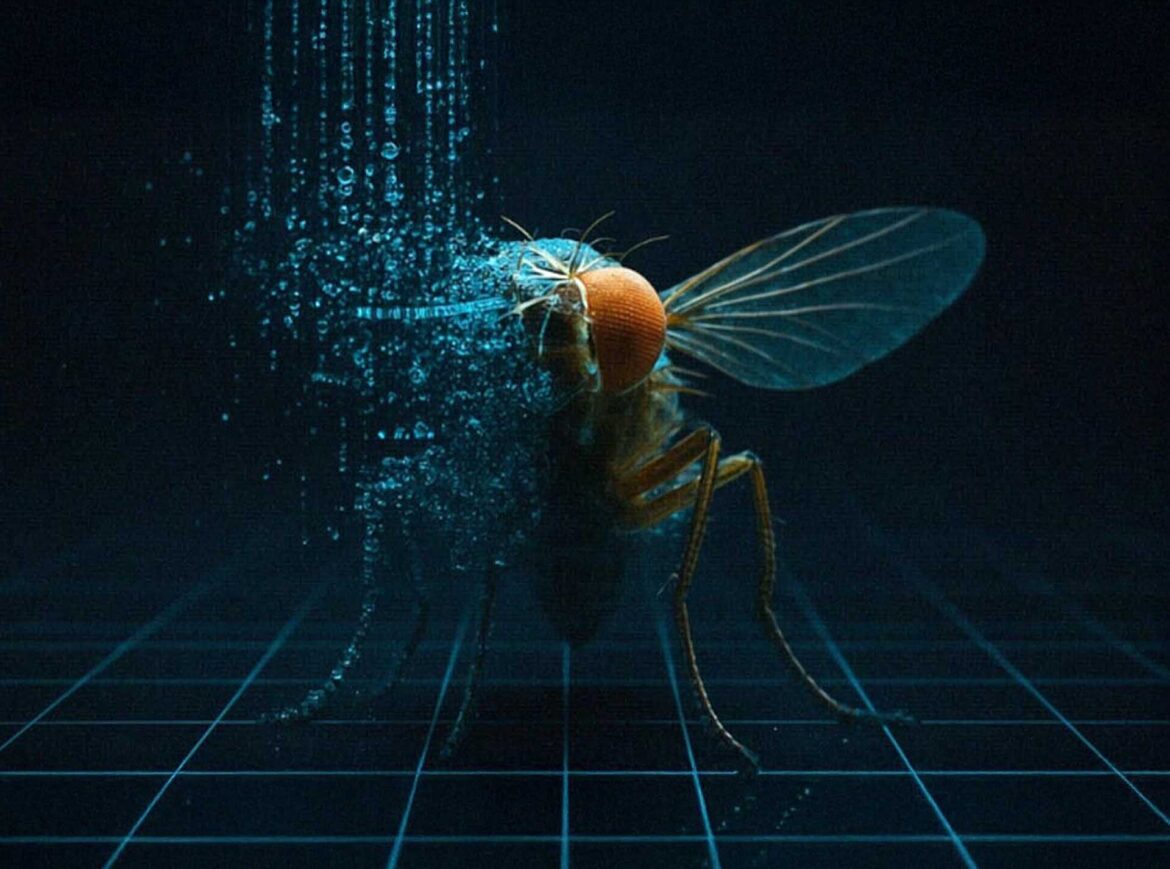Flying like in nature – AI simulates insects with unprecedented precision
Visualization: © Ulrich Buckenlei | Symbolic image of the digital twin of a fruit fly with lifelike motion intelligence
Digital fly, real behavior – The revolution of AI simulation
How realistically can artificial intelligence replicate the behavior of living organisms? Research teams from Janelia and DeepMind provide the answer with an impressive premiere: the first fully AI-controlled fruit fly in virtual space. This model not only moves like a real insect – it thinks, reacts, and acts with astonishing precision.
Instead of animations, a biologically informed, data-driven simulator is used. Every wingbeat, every landing, every reaction is based on real behavioral input from nature. The AI learns from these patterns and controls a complete digital skeleton in real time.
- Trained on real behavior: The AI controls every leg, every turn, every flight angle.
- Physics-based: The simulation considers adhesive surfaces, air displacement, and gravity.
- Biologically inspired: Structure and control are based on anatomical models.

Digital twin of a fruit fly with real-time response to the environment
Image: © Ulrich Buckenlei | Source: Janelia Research Campus / DeepMind
What is being created here is more than just a model – it’s a new research platform. The combination of anatomy, AI, and simulation physics takes basic research to a new level and paves the way for applications in robotics, biology, and immersive systems.
Biology you can touch – The digital fly comes to life
Recreating nature has long been a goal of research – but only now is it possible not just to visualize a fruit fly, but to bring it digitally to life. This is made possible by a precise anatomical model, coupled with artificial intelligence and a physical simulation environment.
- Anatomically accurate: All limbs and joints correspond to the real model.
- Behavior-based: The AI was trained on actual motion data.
- Interactive: The fly responds dynamically to its environment.
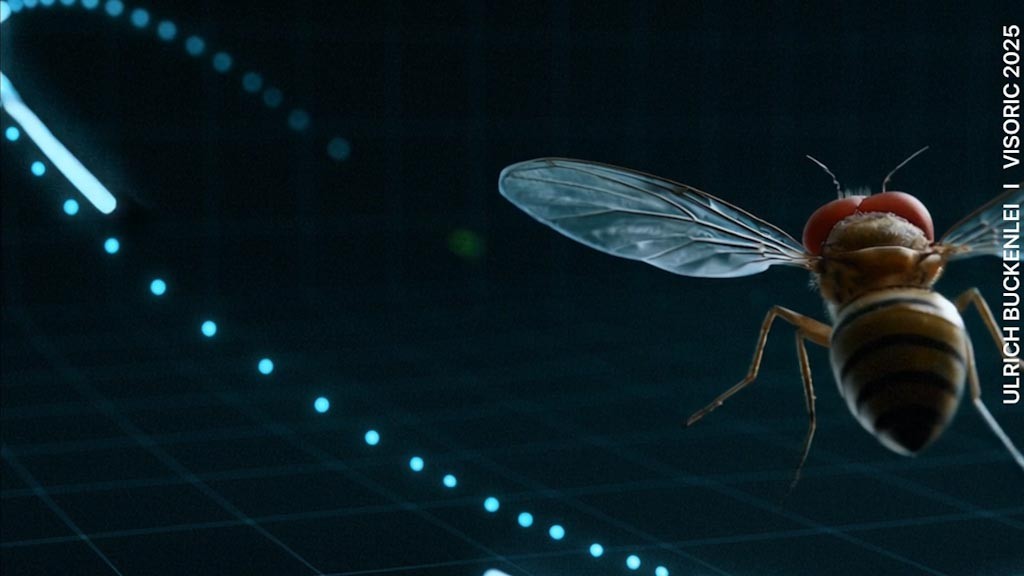
Digital fruit fly with realistic real-time behavior
Image: © Ulrich Buckenlei | Source: DeepMind / Janelia Research Campus
The simulation doesn’t just show movement – it demonstrates behavior. The model lifts, lowers, balances, and corrects itself like a real insect. This yields insights for robotics, neuroscience, and virtual biology.
Understanding motion – Learned by AI
The fly is controlled by an AI trained on real motion data. Every wingbeat, every step is based on biological patterns and optimized through machine learning.
- Highly realistic: Data from high-speed video studies flows directly into the simulation.
- Precision through training: AI controls joints, balance, and responses.
- Real-time processing: Movements occur without delay.
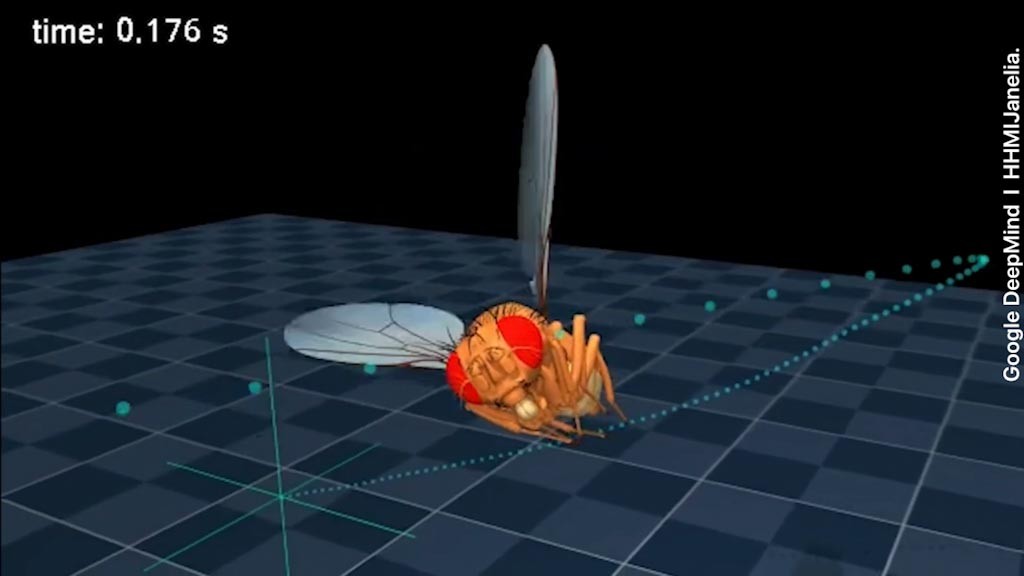
Neural AI model controls every joint of the digital fly
Image: © Ulrich Buckenlei | Source: DeepMind / Janelia Research Campus
The AI is trained through physically realistic feedback: when the fly falls or slips, it learns from it. The result is a behavior that not only functions but feels alive.
Flight behavior and adhesion simulated
Particularly impressive is the simulation of flight phases – including landing, steering, and adhesion to surfaces.
- Adhesion physics: The fly can stick to glass or walls.
- Reactive flight maneuvers: Threats are actively avoided.
- Controlled landing: Simulation also succeeds in uneven environments.
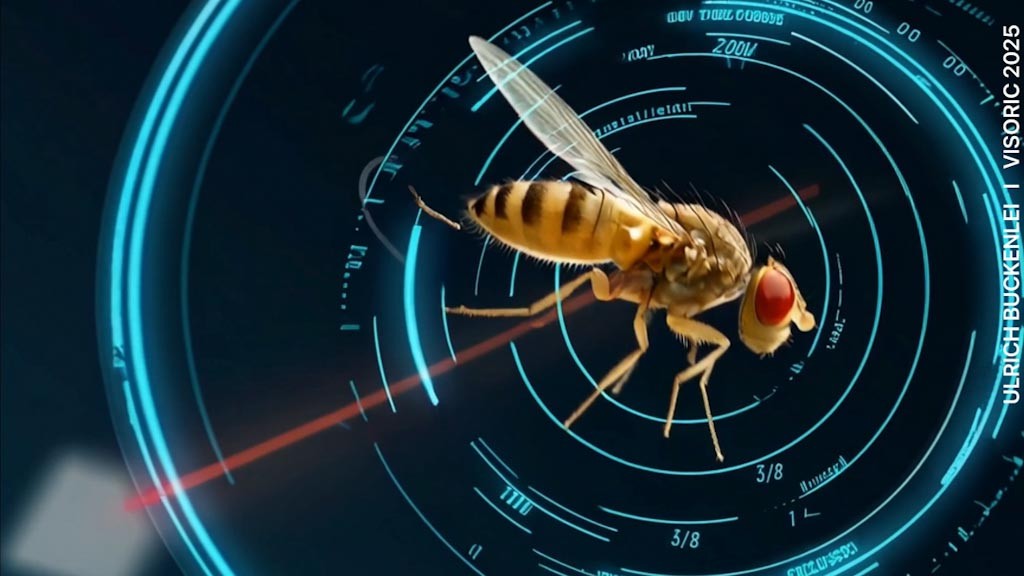
Reactive flight simulation including surface adhesion
Image: © Ulrich Buckenlei | Source: DeepMind / Janelia Research Campus
Especially the precise execution of leg motor control allows for realistic scenarios like turning in the smallest space or sudden takeoff.
Infographic: How the system works
The following infographic shows how anatomy, physics, and AI merge into a digital life model.
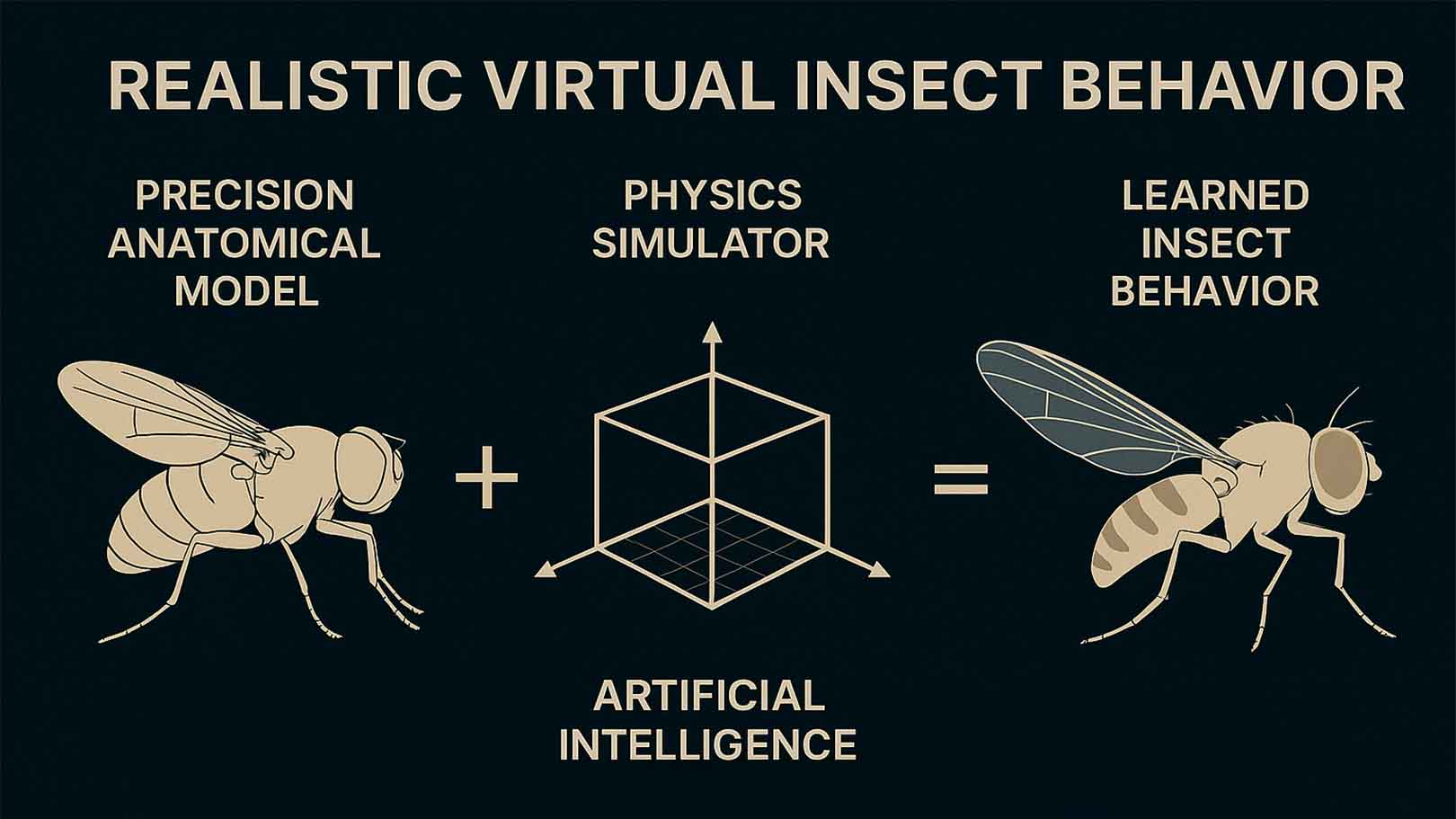
System architecture: Anatomy, behavior, real-time control
Graphic: © Ulrich Buckenlei
This modular simulation also allows for variations: other insects, robot models, and even micro-avatars could emerge using the same principles.
Biology in motion – The video
The poster image shows a snapshot – the following video clearly illustrates how fluid and complex the motion logic truly is.
Biologically inspired flight simulation in real-time – AI meets insect physics
Image: © Ulrich Buckenlei | Visual based on research data from Janelia Research Campus & DeepMind | Source: https://www.janelia.org/project-team/flyem | Video analysis: XR Stager / Visoric
New opportunities for research, exhibitions, and product design
- Are you looking for immersive experiences for your trade show booth?
- Would you like to make digital twins accessible as interactive simulations?
- Or are you planning educational or research formats with virtual biology?
Then talk to the expert team at VISORIC. We develop immersive presentations, interactive research experiences, and AI-based models for industry, science, and the creative sector.
Contact Persons:
Ulrich Buckenlei (Creative Director)
Mobile: +49 152 53532871
Email: ulrich.buckenlei@visoric.com
Nataliya Daniltseva (Project Manager)
Mobile: +49 176 72805705
Email: nataliya.daniltseva@visoric.com
Address:
VISORIC GmbH
Bayerstraße 13
D-80335 Munich


